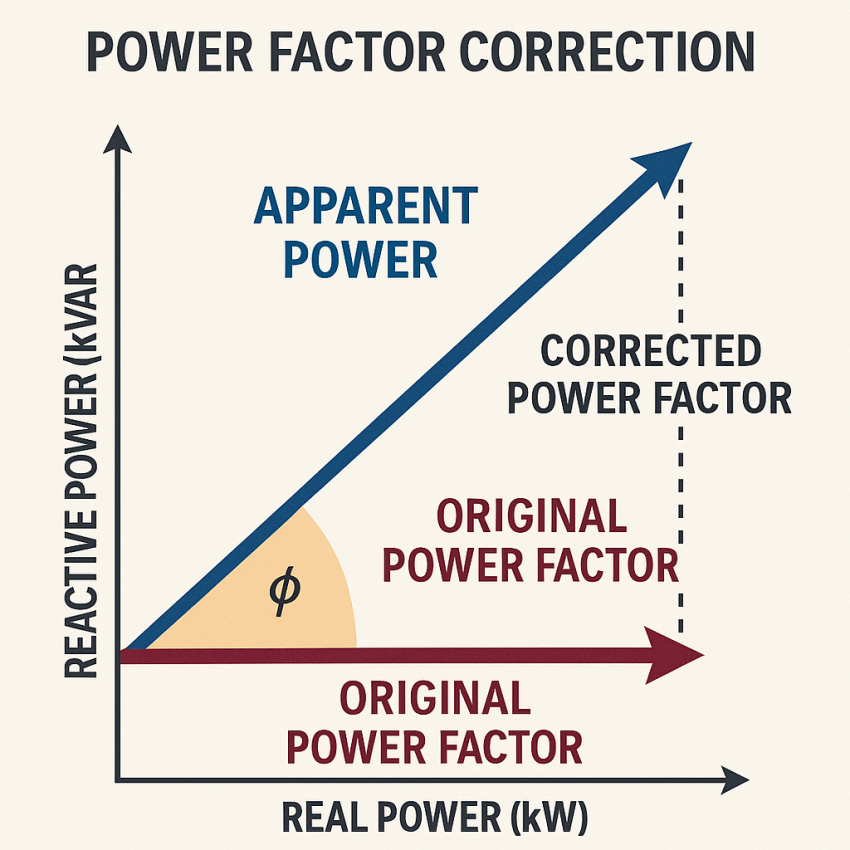The global power factor correction (PFC) market is projected to grow significantly, reaching USD 3.3 billion by 2030 from USD 2.4 billion in 2024, at a compound annual growth rate (CAGR) of 5.5%. This growth is driven by the increasing demand for energy-efficient products, rising electricity costs, and stringent environmental regulations worldwide.
Why Power Factor Correction is Essential
Power factor correction improves the efficiency of electrical power systems by compensating for the lagging power factor caused by inductive loads such as motors and transformers. Capacitor banks supply reactive power, which reduces the burden on utilities and enhances power quality. This leads to lower electricity bills, reduced downtime, improved equipment efficiency, and extended equipment lifespan—all critical benefits for industries and commercial establishments.
Download PDF Brochure – https://www.marketsandmarkets.com/pdfdownloadNew.asp?id=193037457
Key Market Drivers
-
Rising Energy Demand and Costs: Industrialization and commercial activities are increasing global electricity consumption, making power factor correction vital for reducing energy bills.
-
Government Regulations and Incentives: Governments worldwide promote energy efficiency through regulatory policies and programs like the NSW Energy Savings Scheme, which provide financial incentives for PFC adoption.
-
Growth of Electric Vehicles (EVs): The escalating demand for EVs is encouraging investments in power infrastructure, including PFC systems.
-
Renewable Energy Integration: The rising use of renewable energy sources necessitates PFC systems to maintain grid stability and power quality.
-
Technological Advancements: Active power factor correction systems offer cost-effective alternatives to traditional solutions, helping mitigate high upfront costs.
Regional Outlook
North America is anticipated to be the fastest-growing market due to rising energy demand, high electricity prices, government investments, and a strong focus on energy efficiency. The region’s efforts to modernize energy infrastructure and comply with stringent energy conservation policies further boost PFC adoption.
Market Challenges
Despite the benefits, high initial costs related to expensive components like high-capacity capacitors and complex engineering requirements limit widespread deployment. Additionally, integrating PFC systems with existing infrastructure poses technical challenges, including data format incompatibilities, security concerns, and increased maintenance complexity.
Market Segments and Applications
-
The 500–1,500 kVAr segment is significant, serving large industrial and commercial facilities with substantial electric loads, offering efficient reactive power management and energy cost reduction.
-
Data centers represent a key application area due to their growing power consumption and critical need for reliable, efficient power management to prevent downtime and equipment damage.
Top Companies in Power Factor Correction Industry
- Eaton (Ireland),
- ABB (Switzerland),
- GE Vernova (US),
- Schneider Electric (France),
- Hitachi Energy Ltd (Switzerland).
These firms offer a broad range of products and maintain extensive global sales and marketing networks.
The power factor correction market is poised for strong growth as industries and governments prioritize energy efficiency and sustainability. While challenges remain, ongoing innovations and supportive policies are expected to drive widespread adoption, delivering substantial cost savings and environmental benefits globally.

